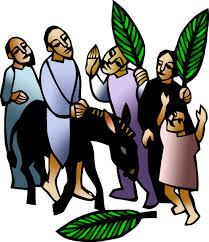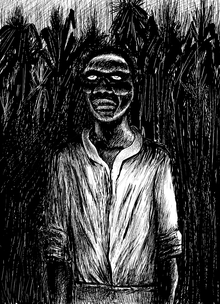Save us, we beseech you, O Lord! O Lord,
we beseech you, give us success! (Psalm
118:25)
Rejoice greatly, O daughter Zion! Shout
aloud, O daughter Jerusalem! Lo, your king comes to you; triumphant and
victorious is he, humble and riding on a donkey, on a colt, the foal of a
donkey. (Zechariah 9:9)
The TV news folks here in Philadelphia always make a point of recognizing Palm Sunday—even though they often begin their coverage by saying, “Catholics in our region celebrated Palm Sunday today, a day commemorating Jesus’ triumphal entry into Jerusalem and the start of Holy Week.” I always want to shout at the TV and say “Hey! Liturgical Protestants celebrate Palm Sunday, too! What are we, chopped liver..?” But, if you know anything about Philly, there are lots of Roman Catholics here, so I guess they get the coverage. The newscasts will usually show some footage from the Cathedral of Saints Peter and Paul. You’ll see a snippet of some really fancy procession with palm branches. Anyone watching will get the idea this is a pretty darn special event. And it is.
The gang here at Faith Lutheran usually makes a good showing on Palm Sunday. For some reason folks really like getting those blessed palm leaves. Some of my parishioners have mastered the art of folding the leaves into little crosses, a bit of Lutheran origami which is not at all inappropriate given the nature of the week that is to follow. There’s a certain festiveness to Palm Sunday. In years past we’d always have Sunday School kids marching down the aisle in the processional, waving palm branches, and being adorable. After all, Matthew’s gospel tells us that children in the temple greeted Jesus with the shout of “Hosanna to the Son of David![i]”
Let me remind you again that at Faith Lutheran of Philadelphia we celebrate Palm Sunday, not Sunday of the Passion. It’s not that I’m a grumpy liturgical purist who can’t abide any change in tradition,[ii] but the old actor in me loves the theatricality of re-enacting the Passion narrative through the events commemorated on each of the holy days in the eight-day period. I don’t like reading the whole Passion narrative on the Sunday before Easter. For that you should come to church on Maundy Thursday and Good Friday. I prefer to read just the Palm Sunday story on Palm Sunday, which, for my money, is Matthew 21:1-17. It’s the story of Jesus riding on the donkey, being greeted by the crowds with palms and garments strewn in his path, and then entering the temple and unloading some righteous wrath on the money-changers and dove-sellers. It ends with Jesus healing the blind and lame in the temple and the chief priests and scribes getting their shorts bunched up because the kids are calling for Jesus, as Son of David, to save them.
Just a quick note about the way our man Matthew tells this story: Most smart Bible scholar folks believe Matthew was writing to a Jewish community who knew their Hebrew Bible pretty well. He loves to cite passages from the Hebrew Scriptures which he feels identify Jesus as the hoped-for Messiah. The problem is he either flunked Hebrew or he’s reading from a Greek translation of the Hebrew Bible (which he probably was). Sometimes he gets a little confused, like in verse 7 where Jesus is supposedly sitting on both the donkey and her colt at the same time. This wasn’t a circus trick. It’s just that Matthew mis-read Zechariah 9:9. The prophet writer was using what’s called a “hendiadys,” which is a figure of speech in which two independent words are connected with “and” instead of using an independent word and its modifier. It’s like saying, “It’s nice and warm” instead of “It’s nicely warm.” So when Zechariah says the king comes riding on “a donkey and a colt the foal of a donkey,” he’s really only describing one animal—a donkey colt. (Not even Jesus could ride two critters at once!)
But this colt business makes me wonder about just how “triumphal” Jesus’ triumphal entry was. Yeah, he drew a crowd, but he must’ve looked awfully silly riding on that baby donkey. Also, the crowd is shouting “Hosanna!” Literally, this means “Save, I/we beseech you!” It’s actually a cry for help. It isn’t, “Way to go, Jesus! You really won a victory!” It’s more like, “Please help us, Jesus!” It sounds pretty desperate to me.
What was really going on on that Sunday in Jerusalem so long ago? If you were there, what might you have been thinking as this itinerant rabbi from the sticks rode into town on that little donkey?
I’ll bet some in the crowd were just star-gazing. They’d heard about this Jesus of Nazareth dude, and they just wanted to get a peek at a celebrity. They may have been curious like St. Luke tells us King Herod was, and they wanted to see if he’d perform a miracle[iii]. They may have gotten all giddy and excited, like teenage girls catching a glimpse of Taylor Swift, but they really didn’t know or understand who Jesus was and what his message would be.
But I’m guessing the bulk of the cheering fans who rushed out to greet Jesus—the ones who shouted, “Hosanna!”—were pretty much hoping and believing he’d do something spectacular. I think they had a lot in common with us. They were tired and scared and confused, and they were just praying to God to send them somebody who could straighten out the rotten world they were living in. They were afraid of sickness and violence and dealing with poverty and living under a government that didn’t seem to care for them at all. I bet they had a lot of hope pinned on Jesus. When he went into the temple and read the riot act to the s.o.b.’s who’d been ripping them off for decades, these folks started grinning and cheering. “Finally!” they thought, “Here’s the guy who can call those dirtbags out for the scum they are. This is the guy who will finally stand up for us. You tell ‘em, Jesus! Give ‘em hell!”
But there must’ve been others in the crowd who saw all of this go down and thought, “This is not going to end well.” They may have remembered the Prophet Zechariah’s prediction that the Messiah would come humbly, riding on a donkey, but what good would a humble Messiah be in a world full of so much violence? What good was a man of peace, a teacher of love and forgiveness, against a powerful, entrenched system that ruled through extortion and intimidation and worshiped at the shrine of wealth and ruthless domination?
Does it surprise you that this crowd that
so loved him on Sunday could turn their backs on him on Friday?
How would you have reacted, do you think?
How do we react to Jesus today? What does this coming week mean to you?
[i]
Matthew 21:15
[ii]
Which I might actually be, although my good friend Father Jack is worse in that
regard than I am. For the record, the Catholic Church once began the somber
period leading up to Good Friday and Holy Saturday on the Fifth Sunday of Lent.
This was called “Passion Sunday,” and it began a two-week period called
Passiontide in which the daily offices focused on Our Lord’s suffering. Pope
John XXIII combined Passion Sunday with Palm Sunday during Vatican II.
[iii]
See Luke 23:8




